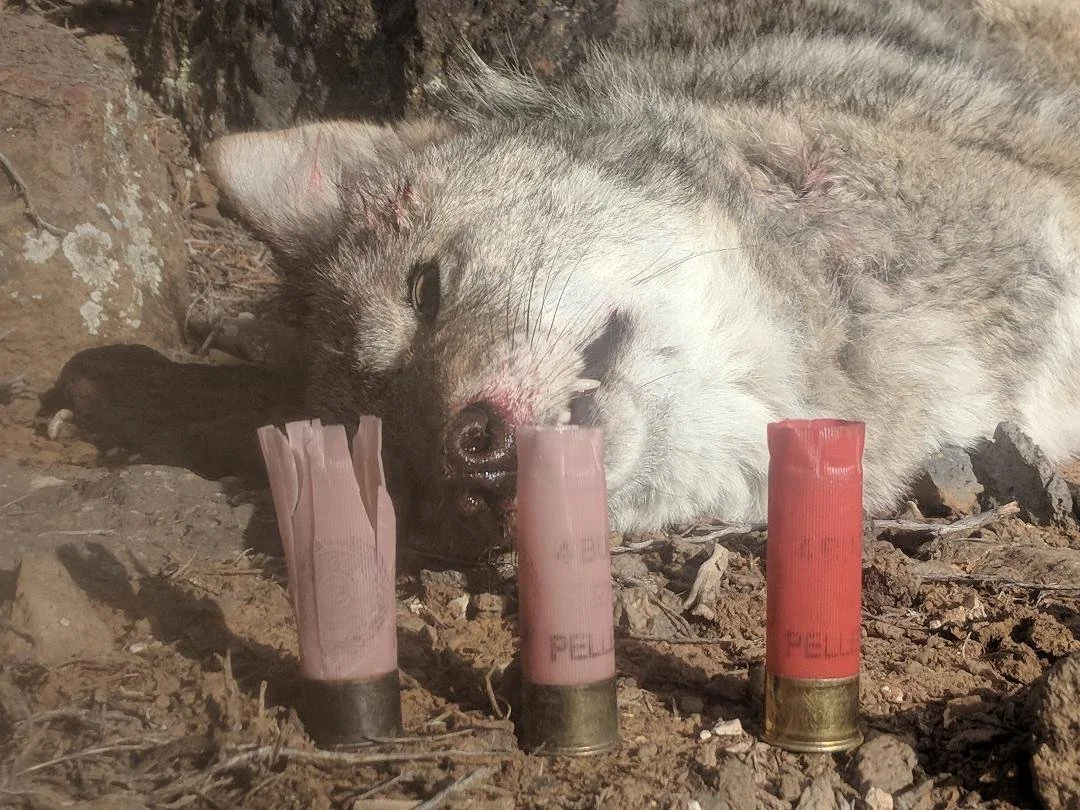Debriefing: Evaluating and learning
Debriefing: Evaluating your stands
I’m a firm believer that a person should always be learning. That is especially true if you want to be a successful coyote hunter. On every stand there will be things that went right and mistakes that were made. The best way to get better is to evaluate each stand you make and learn from the things you did right and the things you messed up.
Take the time to review every stand
Because I learned from my mistakes, I’ve been able to turn this shotgun stand into a 100% successful stand. As you can see from the different weathering on the shotgun shells, I’m three for three at this location. Debriefing each stand has helped me find a better approach route and learn what weather and time of day conditions are best for this spot.
Any time you make a stand that results in a called coyote, remember that stand and as much about it as possible. Did you pick the best route to approach the stand? If not, what would be a better way to get there for the future?
What wind direction is best for this particular stand? What time of day gives you the best opportunity to have the sun at your back?
Is this particular stand better suited for longer range shots with a rifle or closer opportunities that would be better for a shotgun?
Remember what direction the coyotes came from. There is no guarantee the next one will follow the same route, but it’s a definite possibility.
I have a favorite stand that I have called five times. I’ve had seven coyotes respond and have put five on the ground. This stand features a small basin with a grassy area about the size of an average house. The basin is surrounded by gentle slopes covered with fairly thick sagebrush. Try as I might, I have never seen the coyotes approaching the basin. I’ve always spotted them as they appeared on the edge of the sage bordering the grassy area, usually in the same spot. Even though I always try to spot any approaching dawgs, I always have my rifle pointed at the spot they seem to materialize.
Recently, I made a couple of stands in a heavily hunted area. I knew the coyotes there had been called and educated, but though I’d try some new sounds. Though I usually prefer a crosswind, the wind direction dictated that I set up with the wind in my face. There was fresh snow on the ground and as I walked into my calling spot, I didn’t cross any fresh tracks. After completing the stand without calling anything, I walked back to my ride and cut a fresh set of coyote tracks about 100 yards downwind of my stand, about 30 yards from my side-by-side.
This particular coyote was more concerned about a cautious approach on the downwind side than it was about my vehicle. I learned that trying to call coyotes in this area when I couldn’t set up with a crosswind was not a good idea.
Breaking all the rules
Even though every stand can be a learning experience and using what you learn can improve your success, there are no absolutes in coyote hunting.
Earlier this year I had back-to-back successful stands where the coyotes broke all the rules. On both of these occasions, the responding coyote crossed a highway, walked past my truck, within 50 feet, approached from the downwind side and back-doored me. Both walked past me in easy shotgun range, but because I was expecting them to come across an open area in front of me, I had my rifle in hand. What followed was a bit of a circus, but I did manage to put both on the ground.
The coyote on the left was one of these two rule breakers.
This kind of unexpected excitement is part of what makes coyote hunting so fun.

